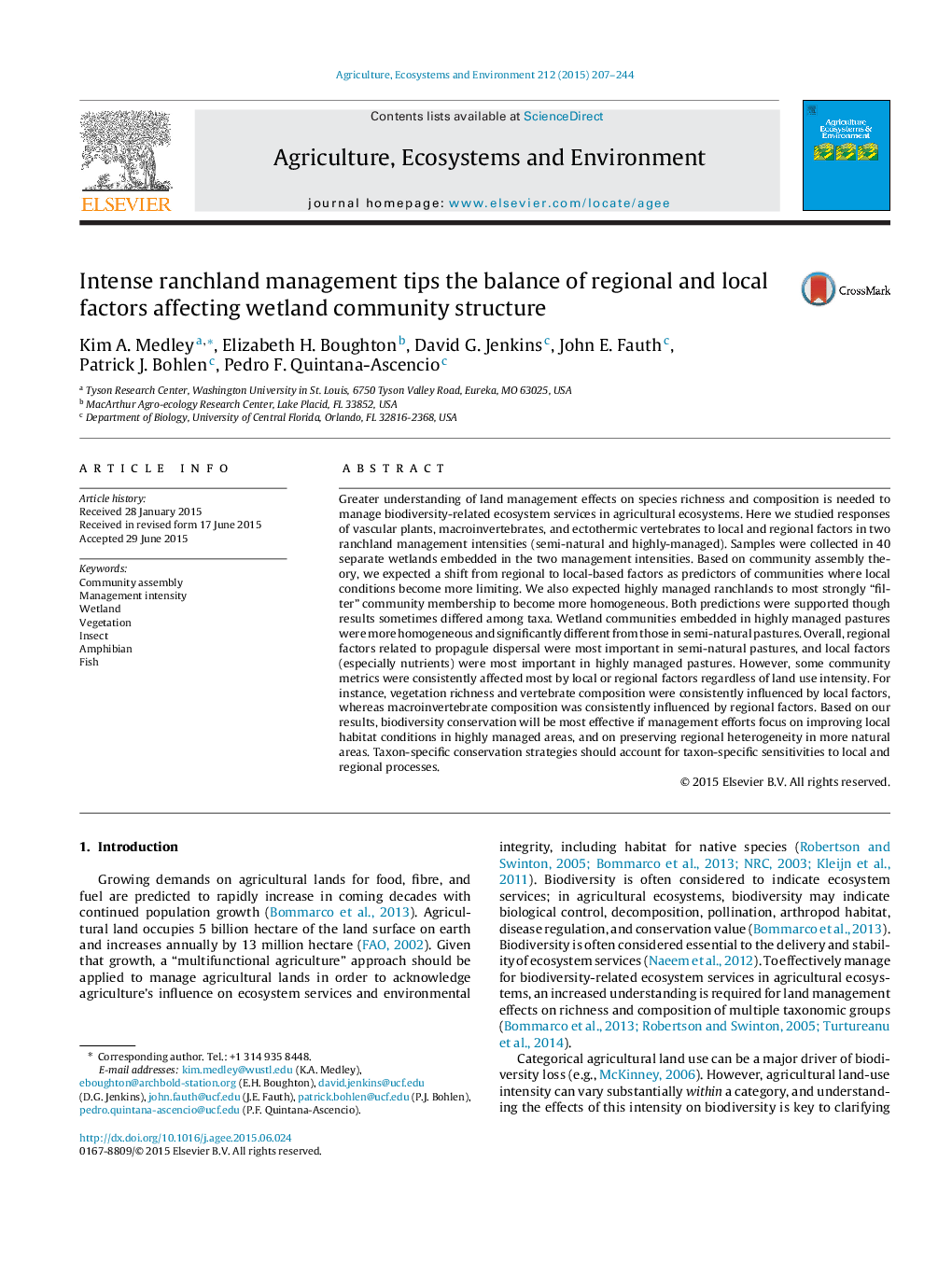| Article ID | Journal | Published Year | Pages | File Type |
|---|---|---|---|---|
| 8487636 | Agriculture, Ecosystems & Environment | 2015 | 38 Pages |
Abstract
Greater understanding of land management effects on species richness and composition is needed to manage biodiversity-related ecosystem services in agricultural ecosystems. Here we studied responses of vascular plants, macroinvertebrates, and ectothermic vertebrates to local and regional factors in two ranchland management intensities (semi-natural and highly-managed). Samples were collected in 40 separate wetlands embedded in the two management intensities. Based on community assembly theory, we expected a shift from regional to local-based factors as predictors of communities where local conditions become more limiting. We also expected highly managed ranchlands to most strongly “filter” community membership to become more homogeneous. Both predictions were supported though results sometimes differed among taxa. Wetland communities embedded in highly managed pastures were more homogeneous and significantly different from those in semi-natural pastures. Overall, regional factors related to propagule dispersal were most important in semi-natural pastures, and local factors (especially nutrients) were most important in highly managed pastures. However, some community metrics were consistently affected most by local or regional factors regardless of land use intensity. For instance, vegetation richness and vertebrate composition were consistently influenced by local factors, whereas macroinvertebrate composition was consistently influenced by regional factors. Based on our results, biodiversity conservation will be most effective if management efforts focus on improving local habitat conditions in highly managed areas, and on preserving regional heterogeneity in more natural areas. Taxon-specific conservation strategies should account for taxon-specific sensitivities to local and regional processes.
Related Topics
Life Sciences
Agricultural and Biological Sciences
Agronomy and Crop Science
Authors
Kim A. Medley, Elizabeth H. Boughton, David G. Jenkins, John E. Fauth, Patrick J. Bohlen, Pedro F. Quintana-Ascencio,
